Bike Perfect Verdict
The Rave SLR is a road bike that has turned up to the wrong party, it might be light, stiff, and fast however its small tire clearance and compromised handling ruin the vibe
Pros
- +
Quick acceleration
- +
Lightweight
- +
Easily holds pace on tarmac or hardpack gravel
Cons
- -
Positive rise handlebar compromises handling
- -
No aero credentials
- -
Extremely fiddly seatpost clamp
- -
Looks boring
- -
Poor frame finish and low-quality hardware
- -
Small tire clearance
- -
Expensive
Why trust BikePerfect
A common gravel trope is that armed with a second set of wheels a gravel bike can be a ‘quiver killer’, as fast as a MTB off-road and then with a quick switch of wheels mixing it with the roadies.
Wilier has adopted this two-for-one approach with its race-orientated Rave SLR, Wilier describes the Rave format as a ‘product with two separate souls, perfect for all-road, perfect for gravel'. So how does this cross-pollination drop bar bike perform when compared to the best gravel bikes?
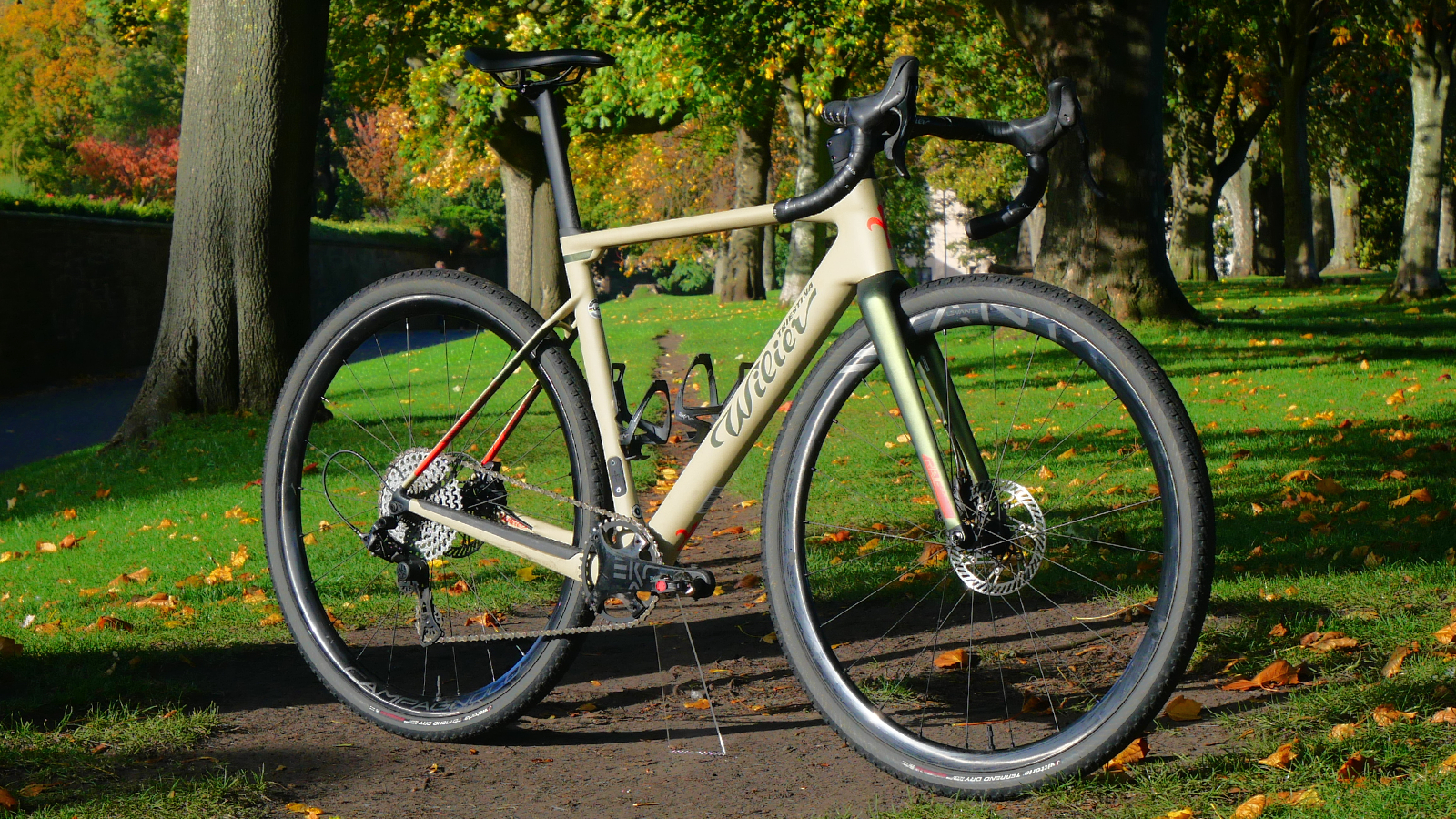
Design and geometry
The Rave SLR comes in two distinct personalities, three road-going builds and four gravel builds. The all-road variant comes equipped with skinny (ish) slick tires, double chainset, road wheels, and Wiliers Zero integrated handlebar while the gravel guise we have here gets fat (ish) tires, a 1x drivetrain, gravel wheels, and Wiliers J-Bend integrated handlebar.
Both bikes use the same frame and fork, built from carbon that Wilier mixes with ‘special viscoelastic fibers’ that have fancy-sounding names like Liquid Crystal Polymers. This is the same carbon used on the Italian brand's lightweight road racers like the Filante SLR and the Wilier 0 SLR and the benefits of this fabrication process and materials contribute to the frame's low weight, with 950g (size medium, painted Black) and a 415g fork.
Geometry varies through the XS to XXL sizing with the head angle spanning between 70- degrees on the XS to 72 degrees on the XXL. The seat tube angle does the same starting at 75 degrees on the XS and rounding out at 72.5-degrees on an XXL. The reach is a racey 385mm on a medium and the chainstays (which are also frame size-specific) are on the shorter side at 423mm on a medium.
Routing is fully internal, through the bars and headset and there are easy-fit spacers if you want to chop the steerer. You get two bottle cage mounts although there are no other bosses under the downtube or for a top tube bag.

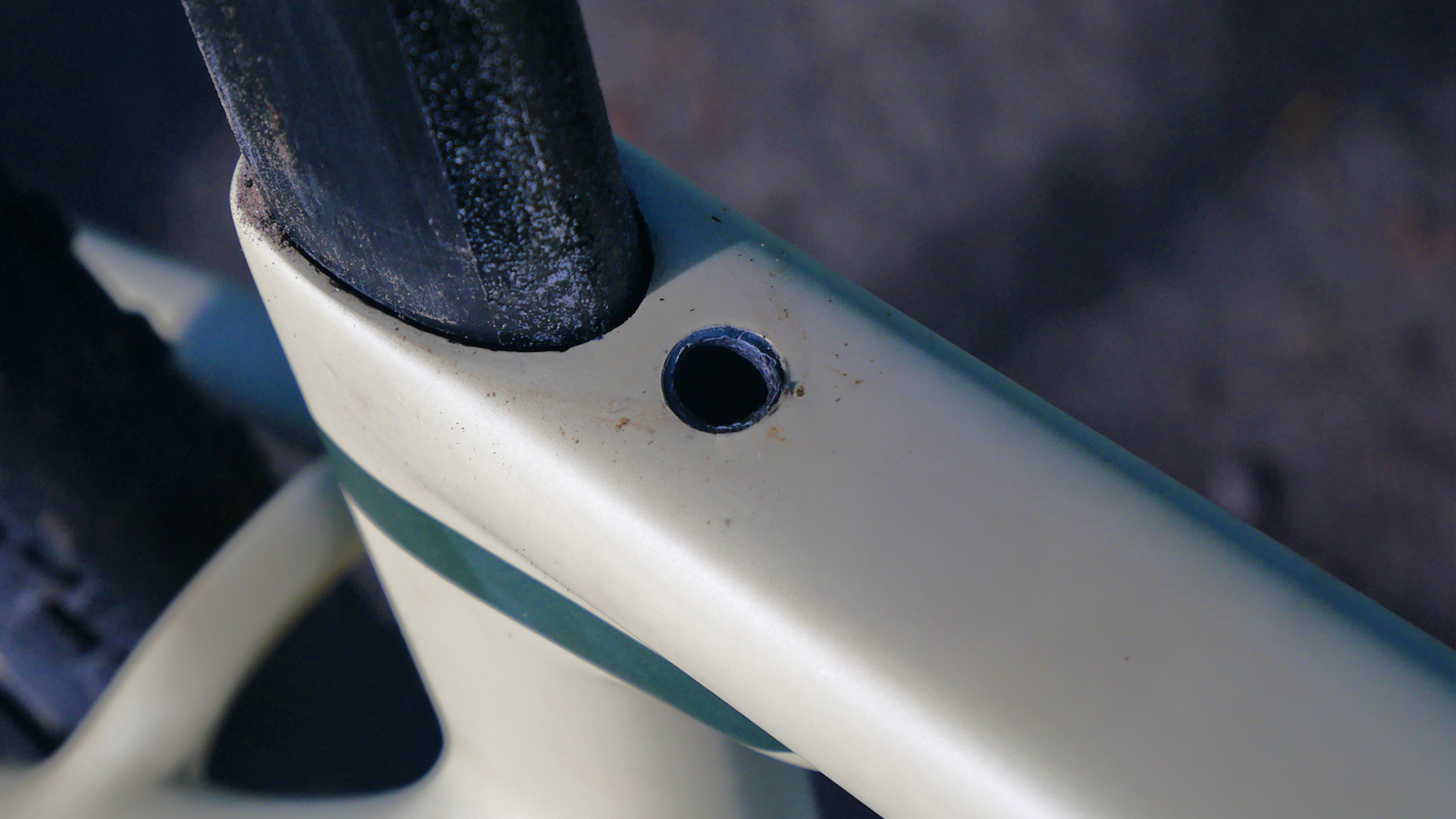
The frame uses an integrated seat clamp which is extremely frustrating to use. The wedge system itself is housed within the frame, which means you need to fit it before you slide the seatpost in. The issue is that you then can't fit the seatpost as it catches on the clamp, the only way around this is to turn the entire bike upside down so that gravity moves the offending piece of the clamp out of the way. Tightening the clamp is a fiddly process requiring you to insert a hex key through a hole that is awkwardly positioned close to the seatpost.
It's not the only issue we had with the frameset. The headset kept coming loose until I fitted a much grippier steerer bung and the derailleur hanger is so soft and minimal that the mere thought of a knock will send your indexing awry. The overall finish was also disappointing for a frame that retails for €5,000 as I found loose carbon shards on the edges around the seat clamp and a lot of carbon dust within the frame.
Wilier rather optimistically claims that the Rave SLR has clearance for 42mm tires, but considering how little space we had around the 38mm semi-slick tires that were fitted we aren't convinced.
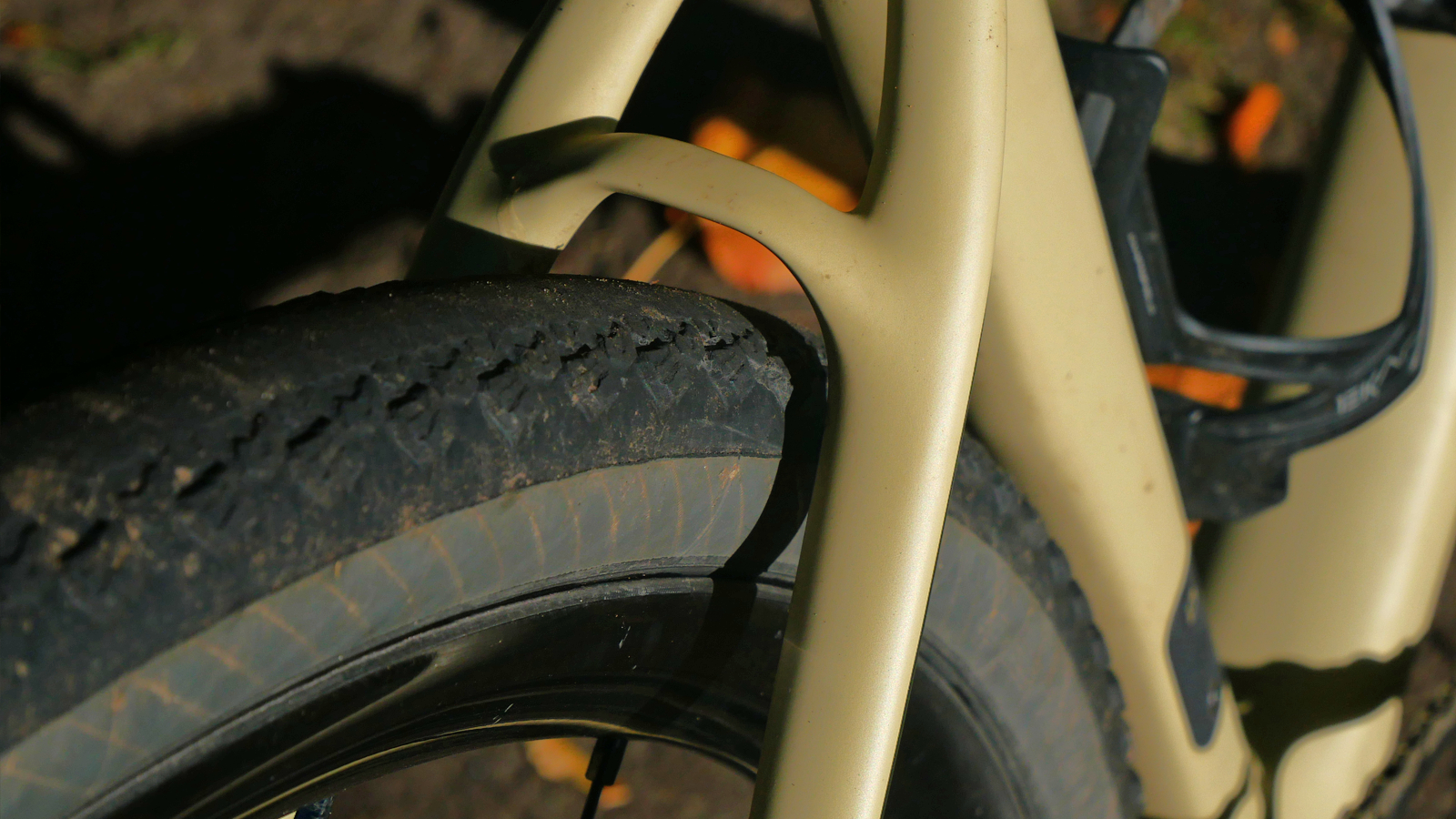
Components and build
Wilier offers the Rave SLR in four build options, there is the ‘budget’ SRAM Rival XPLR bike or three premium options which come equipped with Wilier carbon wheels and the choice of Campagnolo Ekar, Shimano GRX Di2 or SRAM Force XPLR.
Our bike came with Ekar plus the added bonus of Campagnolo’s Levante gravel wheelset, rather than Wilier’s SLR36GRV carbon wheels, all of which worked well throughout the test period. The wheels come fitted with Vittoria’s Terreno Dry 38mm tires, the slick tread as expected struggles in greasy or loose conditions although it grips and rolls superbly on hardpack and compliments the bike as an all-road tire.
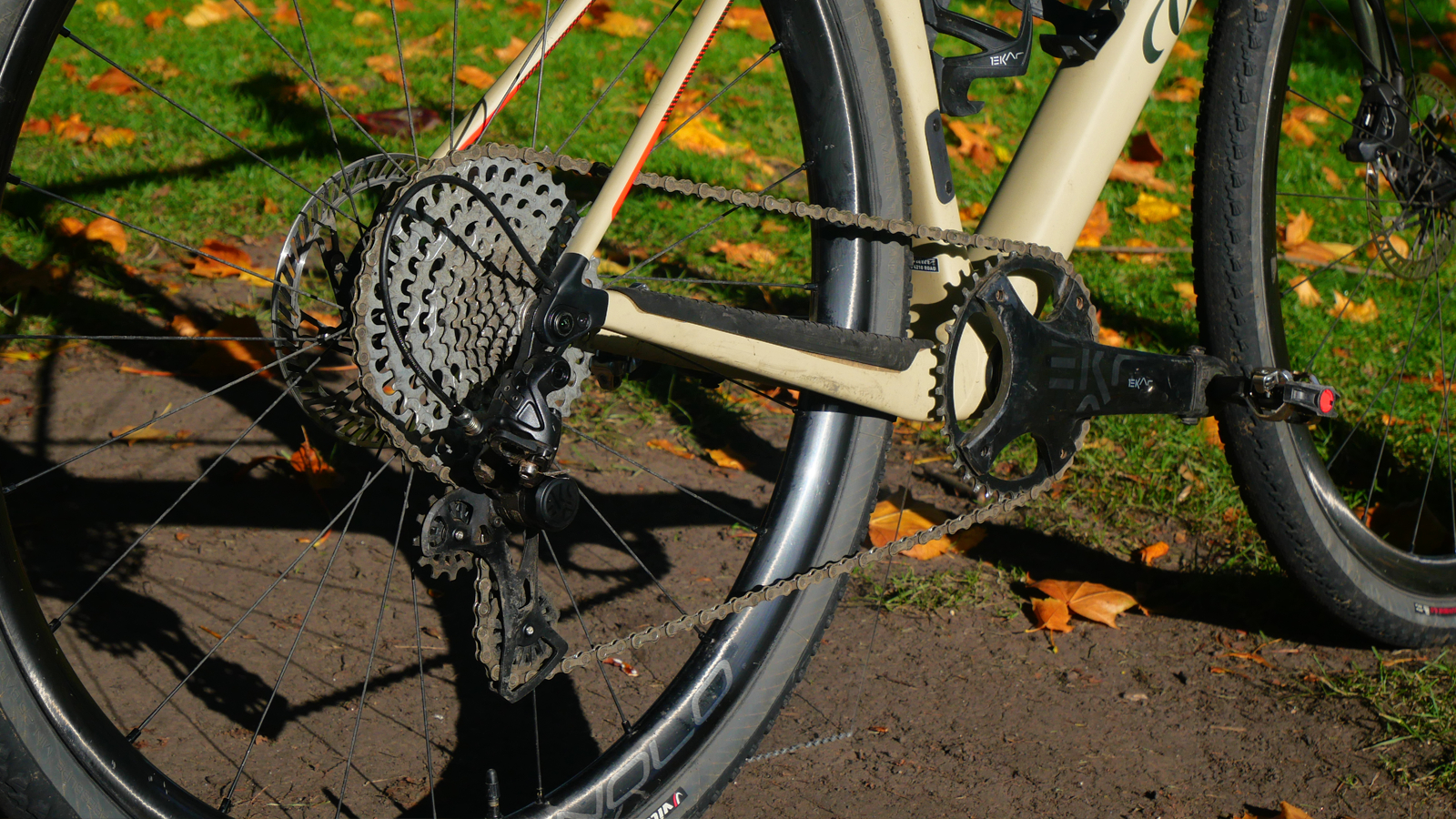
I wasn’t particularly fond of the J-bar, the bar shape is fine however the lack of adjustment (particularly regarding the stem angle, more on that later), difficulty mounting accessories, and tight internal routing puts me off. The final annoyance was the open routing holes on the underside which not only annoyed my fingers when on the tops, but would also irritatingly whistle in the wind or when riding at speed.

Ride, handling and performance
The Rave SLR is easily one of the lightest gravel bikes I have ridden, paired with a stiff reactive frame the Rave SLR is devastatingly fast whether it's sprinting or climbing. The bike can hold a strong pace along the flat too, turning over miles with ease on rolling or changeable terrain.
Wilier says on its website that the ‘Rave SLR will be a new cycling experience, unexpected for many’, this is especially true for the handling. I found the cornering to feel quite perched and unpredictable, this was particularly noticeable on tighter corners as the bike would suddenly dive into bends without warning.
If you are building a Rave SLR up from a frameset I recommend you opt for the road-going handlebar rather than the J-Bar as I suspect the positive rise of the one-piece gravel bar was the cause of the Rave’s handling issues. Better yet, outsourcing your own cockpit will give you more flexibility to get the right fit as the J-bar only comes in two sizes and the Zero bar has aggressive road lengths, rather than stubbier wider gravel options.
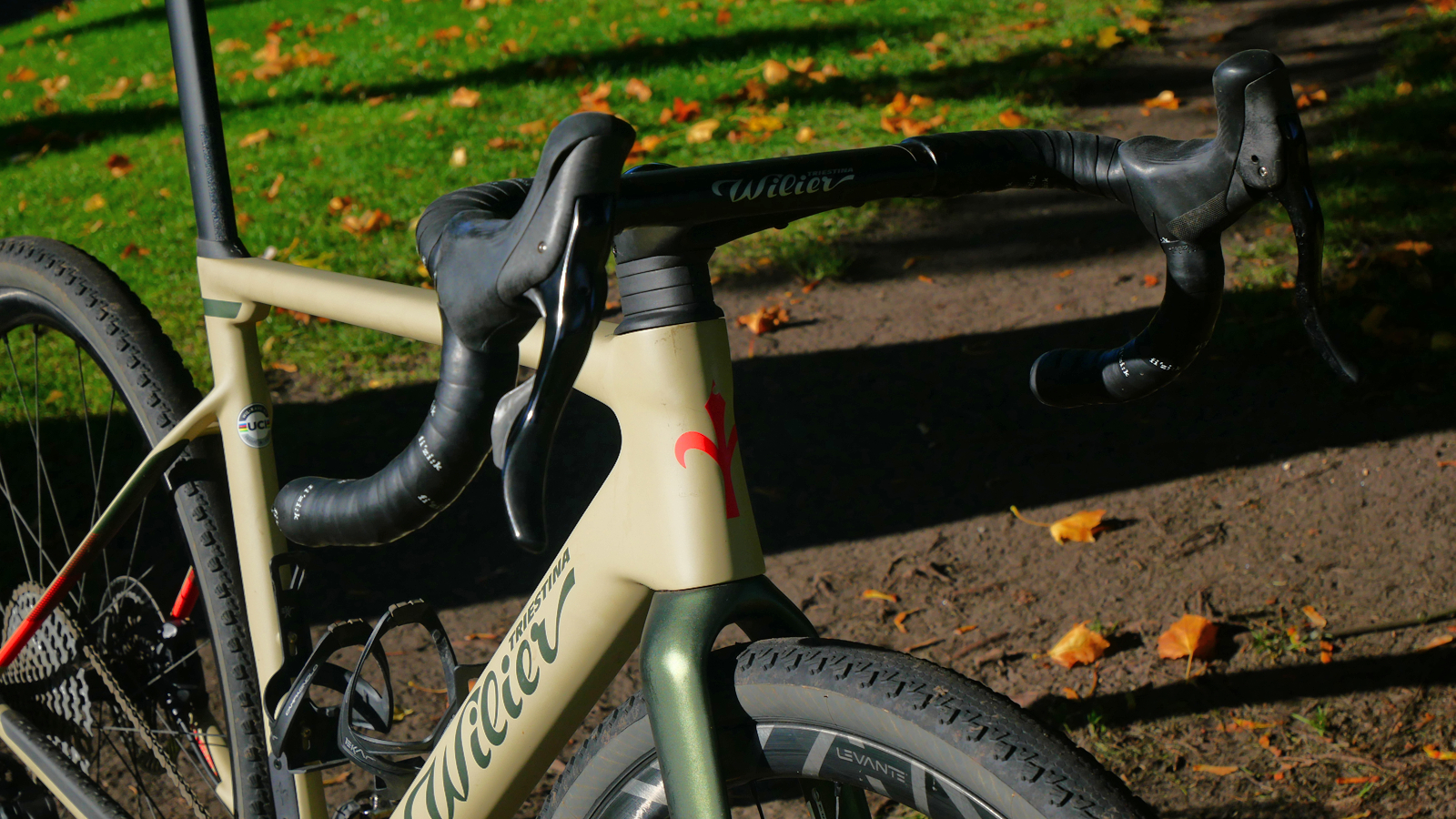
Verdict
If your interpretation of gravel riding is best described as natural road, Strada Bianchi, or UCI Gravel World Championship then the Rave SLR is going to have some distinguishing qualities. The stiff frame and low weight deliver explosive acceleration and give the Rave SLR the ability to tap out a pace that will see other riders fall off your wheel.
The Wilier has a strict gravel party curfew though and the Rave SLR is quickly overwhelmed when it is faced with the typical gravel riding found in the UK. The stiff frame and handlebar can feel punishing on rough terrain and while I could adapt to the odd J-Bar cornering on the road, its nervous and numb handling had the potential to catch me out on less predictable surfaces. For the homogenized courses of most big gravel races the optimistic 42mm max tire clearance isn’t going to be an issue, although in the real world tires under 40mm just don’t cut it for gravel anymore.
Pricing is high too, not just based on the componentry you get for the money but the overall finish of the bike is disappointing, we would hope for a more refined design and polished finish on a frame this price. It's not like there isn’t a choice of top-end go-fast gravel bikes either, the Rave SLR pricing puts it in direct competition with bikes like the lightweight Cervelo Aspero 5, Basso’s very comfortable but quick Palta 2, and even Pinarello’s ultra racey Grevil F.
Test conditions
- Temperature: 10-30 degrees C
- Surface: smooth to rocky gravel trails, road, muddy singletrack
Tech specs: Wilier Rave SLR
- Discipline: Gravel
- Price: €5,000 (frameset only), builds starting from €5,900
- Head angle: 70 degrees (XS, small), 71 degrees (M, L), 72 degrees (XL), 72.5 degrees (XXL)
- Frame material: Carbon
- Sizes: XS, S, M (tested), L, XL, XXL
- Weight: 7.88kg
- Wheel size: 700c
- Drivetrain: Campagnolo Ekar, 13sp
- Brakes: Campagnolo Ekar
- Wheels: Campagnolo Levante
- Tires: Vittoria Terreno Dry 38mm tires
- Handlebar: Wilier J-Bar, 430mm wide, 90mm stem
- Seatpost: Wilier Carbon
- Saddle: Prologo Dimension AGX

Graham Cottingham joined the BikePerfect team as our senior tech writer in 2020. With over 20 years of riding experience, he has dabbled in downhill, enduro, and gravel racing. Not afraid of a challenge, Graham has embraced bikepacking over the last few years and likes nothing more than strapping some bags to his bike and covering big miles to explore Scotland's wildernesses. When he isn’t shredding the gnar in the Tweed Valley, sleeping in bushes, or tinkering with bikes, he is writing tech reviews for BikePerfect.
Rides: Cotic SolarisMax, Stooge MK4, 24 Bicycles Le Toy 3, Surly Steamroller
Height: 177cm
Weight: 71kg

